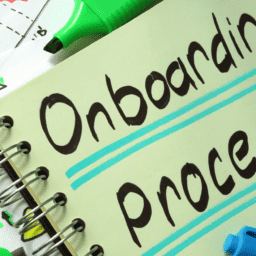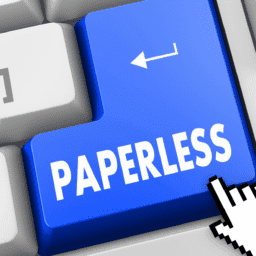The shift towards digital solutions in recruitment has brought the paperless onboarding process to the forefront, marking a significant transition from traditional hiring practices. This essential guide explores how this innovative approach is revolutionizing the way organizations hire, offering efficiency, accuracy, and an enhanced experience for both recruiters and candidates.
Paperless onboarding refers to the digitalization of the entire onboarding process, eliminating the need for physical paperwork. It encompasses everything from the submission of job applications to the final stages of hiring, including document signing, data entry, and orientation.
The traditional onboarding process often involves various paperwork, including tax forms, personal details, employment contracts, and policy acknowledgments. This method was time-consuming and prone to errors and delays, potentially impacting the candidate’s first impression of the organization.
The Advantages of Going Paperless
- Efficiency in Hiring: Digital onboarding significantly speeds up the recruitment process. Organizations can reduce the time-to-hire by automating tasks like document collection and data entry, enabling quicker workforce mobilization.
- Accuracy and Compliance: Automated data entry minimizes human errors. Paperless systems ensure compliance with employment laws and data protection regulations, as they can be programmed to update automatically with changing legal requirements.
- Enhanced Candidate Experience: The digital onboarding process is smoother and more engaging for candidates. Easy access to digital forms and documents and the ability to complete these steps at one’s convenience enhance the overall experience.
- Cost-Effectiveness: By reducing reliance on physical documents, organizations save on printing, storage, and distribution costs. Moreover, the time saved on administrative tasks translates to cost savings in HR operations.
- Environmental Impact: The eco-friendly nature of paperless onboarding aligns with the growing global emphasis on sustainability. By reducing paper use, organizations contribute to environmental conservation efforts.
- Security and Confidentiality: Digital onboarding platforms often have robust security protocols to protect sensitive employee data, offering more protection than physical documents that could be prone to damage or loss.
Implementing Paperless Onboarding
The transition to a paperless onboarding system involves several key steps:
- Choosing the Right Platform: Select a platform that aligns with your organization’s size, industry, and specific needs. It should be user-friendly, customizable, and scalable.
- Integration with Existing HR Systems: Ensure the paperless onboarding software integrates seamlessly with your existing HR and payroll systems for a unified workflow.
- Training and Support: Provide adequate training to HR staff and other stakeholders. Continuous support and troubleshooting are essential for a smooth transition.
- Continuous Improvement: Regularly solicit feedback from new hires and HR professionals to identify improvement areas and keep the system updated with the latest features.
Real-World Impact of Paperless Onboarding
In practical terms, paperless onboarding has profound implications across various industries. For example, reducing the time from offering acceptance to the employee’s first day in healthcare can directly impact patient care and revenue. In sectors like retail and hospitality, where high turnover rates are standard, the ability to onboard new staff quickly and efficiently is crucial.
Looking ahead, paperless onboarding is set to become more integrated with advanced technologies like AI and machine learning. These advancements could offer more personalized and interactive onboarding experiences, enhancing efficiency and candidate engagement.
Paperless onboarding is more than just a trend; it’s a significant step towards modernizing recruitment. Its benefits extend beyond mere efficiency and cost savings, touching on aspects of candidate experience, environmental responsibility, and data security. As organizations continue to navigate the challenges of the digital age, paperless onboarding stands out as an essential tool in their HR arsenal, enabling them to attract, hire, and retain talent more effectively than ever.





